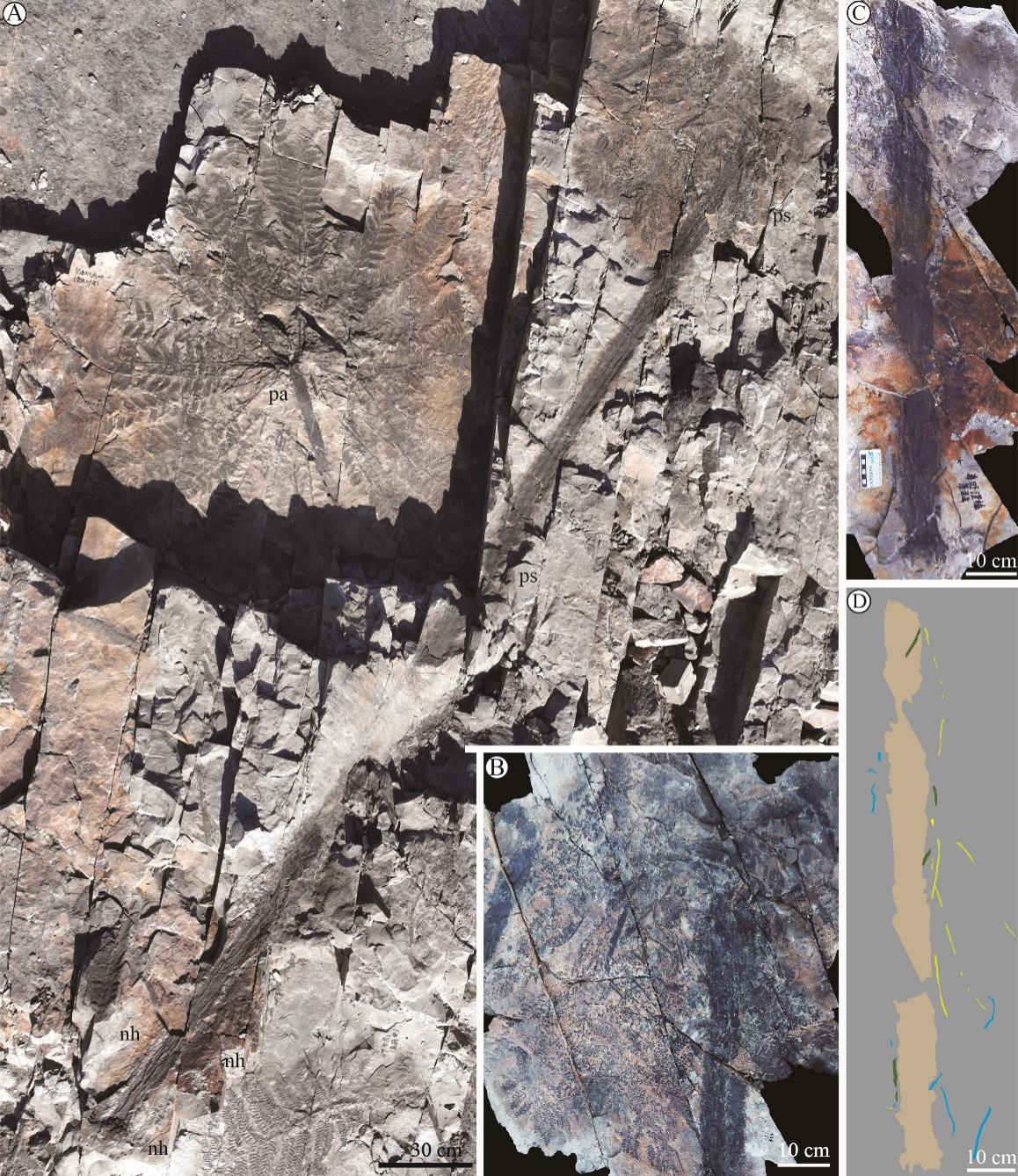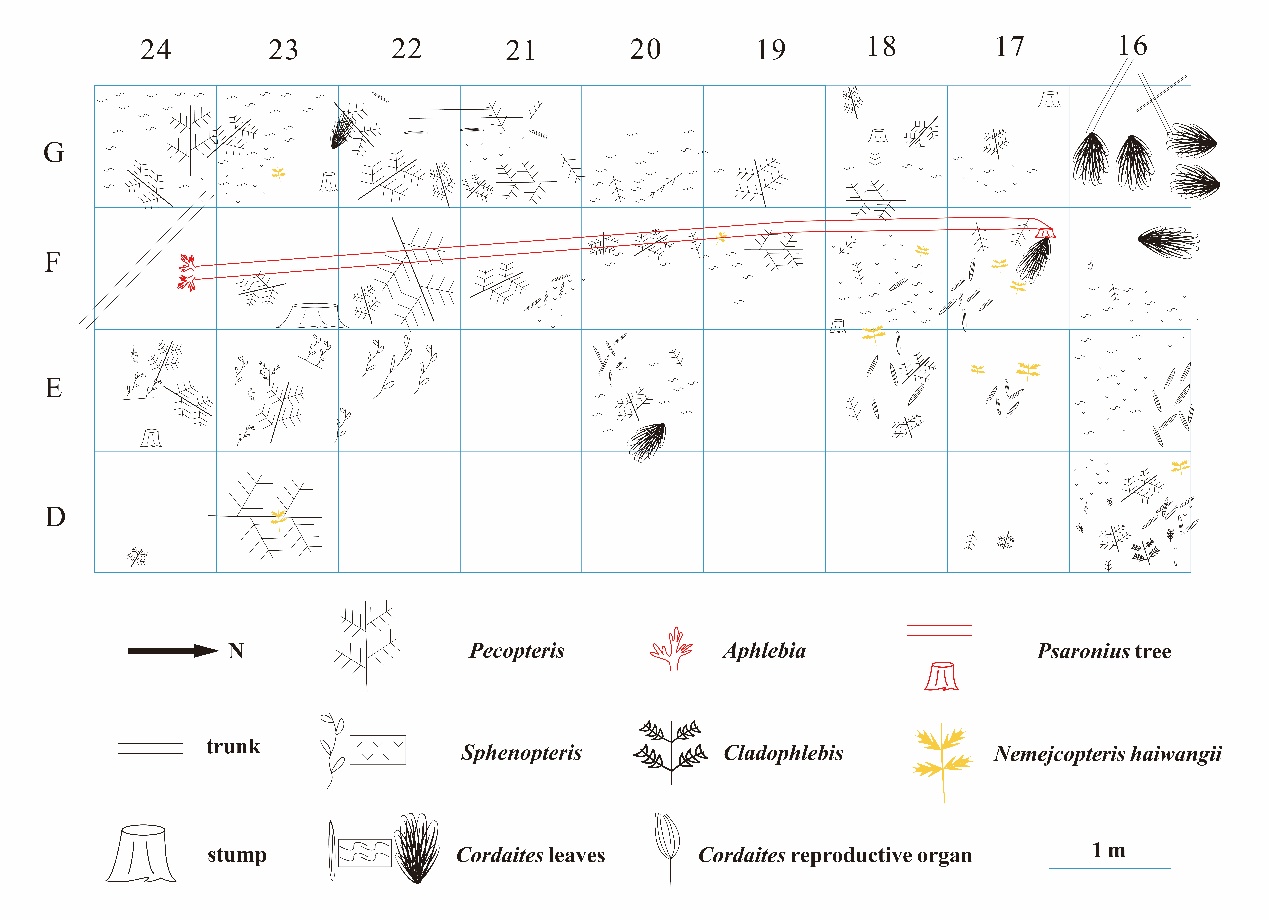Climbing is a growth strategy in which plants rely on other plants or substrates for mechanical support to grow upward. Climbing plants occupy important ecological niches in natural communities and also hold significant value in horticultural landscapes. The origin of this growth habit can be traced back to the late Paleozoic, and its evolutionary diversification is closely correlated with the increasing structural complexity of forest ecosystems. However, due to the limitations of fossil preservation, direct fossil evidence of actual climbing height and ecological interactions between climbers and their host plants remains exceedingly rare in palaeobotanical studies.
The early Permian fossil Lagerstätte “vegetational Pompeii” in the Wuda Coalfield of Inner Mongolia, owing to its unique mode of burial, preserves not only the external morphology and internal anatomy of plant fossils but also evidence of interactions between plants. Therefore, it often provides exceptional fossil evidence of climbing behavior in late Paleozoic plants.
Recently, the research team lead by Prof. Jun Wang from the Nanjing Institute of Geology and Palaeontology, Chinese Academy of Sciences, in collaboration with colleagues from the Institute of Geology v.v.i. (Czech Academy of Sciences), the West Bohemian Museum in Pilsen, and Stanford University, conducted an in-depth study on the fern Nemejcopteris haiwangii. Their findings confirm that N. haiwangii exhibited a climbing habit. The results were published in the international journal Palaeogeography, Palaeoclimatology, Palaeoecology.
Nemejcopteris haiwangii, first discovered in the Wuda “vegetational Pompeii,” was originally reconstructed as a ground-cover plant with a rhizomatous stem and upright fronds. Although previous studies identified prickle-like structures on its rachises, which could have assisted in climbing, direct evidence for this behavior had not been documented. This new study presents several exceptionally preserved specimens that clearly show physical interaction between the fronds of N. haiwangii and the trunks of Psaronius, thereby providing definitive fossil evidence of climbing behavior in this taxon.
Prickles of varying sizes are present on all orders of N. haiwangii rachises, suggesting that the plant used a hook-climbing mechanism to gain support from nearby vegetation. However, compared to climbing strategies such as twining or adhesive pads, this hook-based mechanism appears relatively weak. Quadrat-based palaeoecological data further reveal that N. haiwangii fronds interacted primarily with the middle to lower portions of Psaronius trunks, suggesting a limited climbing height—likely no more than four meters. This further supports the interpretation of its weak climbing ability.
Taken together, the new findings indicate that Nemejcopteris haiwangii typically grew as a ground-covering plant with a rhizomatous stem and erect fronds. However, when encountering a suitable host such as Psaronius, its fronds could bend and use the host for additional support. Contrary to the traditional view that plant climbing habits during the late Paleozoic were primarily controlled by local canopy closure, this study suggests that Nemejcopteris haiwangii could not reach the canopy and was therefore not regulated by forest canopy density. Its facultative climbing strategy more likely represents an adaptation to the periodically waterlogged conditions at the forest floor in swampy environments: when water levels rose, facultative climbers could ascend to higher positions, enabling their foliage to conduct gas exchange more effectively. This provides a novel explanation for the abundant occurrence of climbing plants in the Permo-Carboniferous wetland vegetation.
This research was jointly supported by the National Key Research and Development Program of China, the National Natural Science Foundation of China, and the Youth Innovation Promotion Association of Chinese Academy of Sciences.
Reference: Li F.Y., Li D.D., Votočková Frojdova J., Pšenička J., Boyce C.K., Wang J., Zhou W.M.*, 2025. Climbing habit confirmed in the early Permian zygopterid fern Nemejcopteris haiwangii and its palaeoecological significance. Palaeogeography, Palaeoclimatology, Palaeoecology. 675:113101 https://doi.org/10.1016/j.palaeo.2025.113101.

Interaction between Nemejcopteris haiwangii and Psaronius. (A–C) Different portions of the same trunk, showing N. haiwangii fronds bending and leaning against the tree fern stem; (D–E) Climbing rachises of N. haiwangii and the prickles on their surface; (F–G) Ultimate and penultimate pinnae of N. haiwangii

Nemejcopteris haiwangii (nh) climbing on the tree fern Psaronius (ps). (A) Drone photograph of the excavation site; (B) Crown of the host tree fern Psaronius; (C–D) Preservation of N. haiwangii mainly concentrated around the middle to lower portions of a Psaronius tree fern, field photos from 2023

Quadrat-based field data showing that Nemejcopteris haiwangii primarily concentrated around the middle to lower pportions of a Psaronius tree fern. Quadrat data from 2015
Download:
